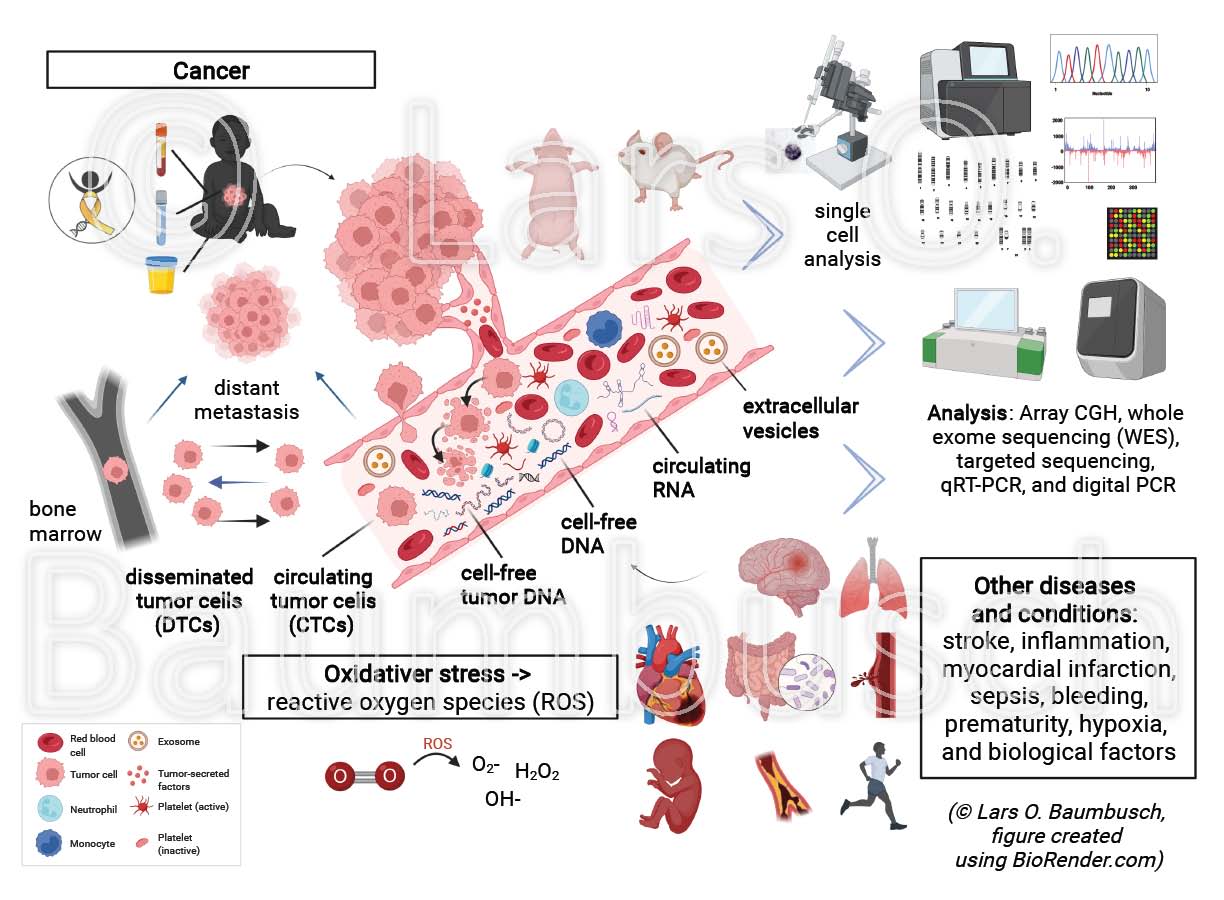Welcome to Lars O. Baumbusch's project group: Molecular biology of oxidative stress and cancer

 I. Childhood cancer
I. Childhood cancer
Childhood cancers are rare; in Norway, there are only about 180 new cases every year. Nonetheless, in high-income countries remain pediatric cancers the dominant cause of death by disease among children over one year of age. Enhanced detection, novel molecular and genetic markers and specific treatment protocols have improved outcome in the last decades; however, there are still several high-risk groups with short survival, recurrent or resistant disease or severe life-long side effects.
Previously, we have characterized the primary tumor, circulating tumor cells (CTCs), and disseminated tumor cells (DTCs) using array CGH and sequencing technology, analyzed cfDNA from various body fluids, and examined non-coding RNA using qRT-PCR and droplet digital PCR (ddPCR) in model organisms and cancer patients. During the last years, we have characterized the genomic profiles of primary tumors and DTCs of high-risk neuroblastoma (NBL) applying different single cell techniques. Further, in a pilot study, we started to characterize the gut microbiota in a cohort of Norwegian children diagnosed with cancer in comparison to a control group of children attending kindergartens in Oslo, Norway.
II. Hypoxia, birth asphyxia, and oxidative stress
Perinatal asphyxia or neonatal hypoxia is a severe medical condition caused by a temporary interruption in oxygen availability during birth resulting in a wide range of short- and long-term consequences, leading annually to approximately 750.000 casualties worldwide. Intervention strategies are limited and there is still a lack of relevant biomarkers for the prediction of the severity and outcome.
Together with our collaboration partners, we examined genomic, transcriptomic, proteomic, and epigenomic changes after hyperoxia using a murin model and pretermn patient samples. We have investigated neonatal asphyxia damage, including microRNA, mutation rate of mitochondrial DNA, cell-free DNA (cfDNA), and long non-coding RNA (lncRNA) using a piglet model of asphyxia.
III. Perspectives
Progress in medical research is based on materials from biobanks, like the Norwegian Childhood Cancer Biobank (NCCB). Modern biotechnology and analytical techniques, including sequencing and single cell methods, will enable researchers to combine genomic, transcriptomic, proteomic, and metabolomic characteristics in a systems biology and translational approach.